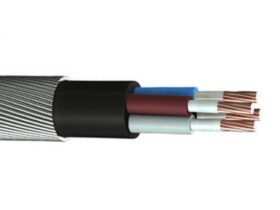Wires and cables are essential components in electrical and communication systems, and they play a vital role in transmitting signals and power. While they may appear similar, they are different in many ways, from their construction to their uses. In this article, we will explore the basic differences between wires and cables.
What is a Wire? A wire is a single strand or a group of strands of conductive material, such as copper or aluminum, that are used to transmit electrical energy or signals. Wires come in various sizes, and their diameter is measured by the American Wire Gauge (AWG) system. The smaller the AWG number, the larger the wire diameter.
Wires are usually classified based on their insulation material, which is used to cover the conductor to protect against electrical shock, moisture, and other external factors. Some common insulation materials used for wires include polyvinyl chloride (PVC), thermoplastic, rubber, and silicone.
Wires are used in a wide range of applications, including power transmission, lighting, heating, and telecommunications. They are commonly used for home wiring, automotive wiring, and electronic circuits.
What is a Cable? A cable is a bundle of two or more wires that are twisted or braided together and covered with a protective outer layer. The wires in a cable can be identical or different in terms of their size, insulation, and function. The outer layer of a cable is typically made of materials such as PVC, polyethylene, or rubber.
Cables are used for transmitting signals or power over long distances. They are commonly used for telecommunication, networking, and power transmission applications. Cables are also used for audio and video transmission, as well as for home theater systems.
Differences Between Wires and Cables Now that we have a basic understanding of what wires and cables are, let’s explore some of the key differences between them.
Construction One of the most significant differences between wires and cables is their construction. Wires are a single conductor, while cables are made up of multiple conductors. Cables have a central core made up of twisted or braided wires, which are then wrapped in insulation and covered with a protective outer layer.
Uses Wires and cables are used for different applications. Wires are commonly used for low voltage applications such as home wiring, automotive wiring, and electronic circuits. Cables, on the other hand, are used for transmitting power and signals over long distances. They are used for telecommunication, networking, and power transmission applications.
Flexibility Wires are generally more flexible than cables. This is because they are a single conductor and do not have a protective outer layer. Wires can be easily bent and twisted without causing damage, while cables are more rigid and less flexible.
Durability Cables are more durable than wires. They are designed to withstand harsh environments and can resist moisture, temperature changes, and other external factors. Wires, on the other hand, are more susceptible to damage from moisture and other external factors.
Cost In general, cables are more expensive than wires. This is because they are more complex in their construction and require more materials.
Conclusion In conclusion, wires and cables are essential components in electrical and communication systems. While they may appear similar, they are different in many ways, from their construction to their uses. Wires are a single conductor used for low voltage applications, while cables are made up of multiple conductors and used for transmitting power and signals over long distances. Understanding the differences between wires and cables is crucial for selecting the right components for your specific application.












Leave a Reply